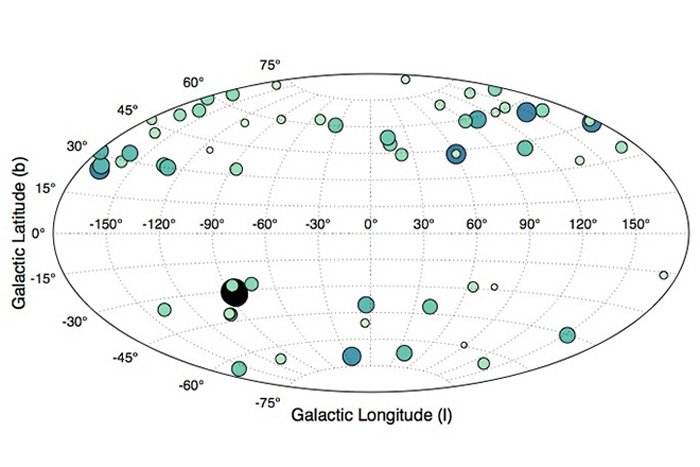Galaxy Map: Here Are the Milky Way's Red Dwarfs

The Milky Way's diminutive red dwarf stars have been mapped for the very first time and the results show that roughly 7 percent of them live in the outer reaches of the galaxy.
The information came from observations from the Hubble Space Telescope — which serendipitously observed 274 dwarfs while looking at distant galaxies — and the application of a density model to estimate how many there are in the galaxy. With these data, astronomers estimate there to be 58 billion red dwarfs, which will keep mappers busy for many years.
ANALYSIS: Could Violent Red Dwarfs Turn Mini-Neptunes into Exo-Earths?
"Astronomers believe that there are very many of these stars. That makes them really quite suitable for mapping the galaxy even though they are so hard to find," said Leiden Astronomy student Isabel van Vledder, one of the researchers on the paper, in a statement. Co-leading the paper was Dieuwertje van der Vlugt, also a student.
The students looked at M-class red dwarf stars, which are also locations where planet-hunters often seek out planets. The stars are dimmer than our own sun, making it easier to detect faint planets.
ANALYSIS: Billions of Habitable Worlds in Our Galaxy?
The research also has implications for future mapping missions, particularly the upcoming Euclid Space Telescope that the European Space Agency expects to launch in 2020. Euclid will map the whole sky in infrared light, where dwarfs are easiest to spot.
Get the Space.com Newsletter
Breaking space news, the latest updates on rocket launches, skywatching events and more!
"With our research, astronomers can now better assess whether they are dealing with a distant galaxy or a star in our own galaxy," Van Vledder said.
The students used three density models to determine the disk and the halo of the Milky Way (both together and separately). Using the Monte Carlo statistical modelling method, the students then determined which density model was best. It turned out to be the one that included both the disk and the halo of our galaxy.
ANALYSIS: Red Dwarf Stars Probably Not Friendly for Earth 2.0
The research was published in the Monthly Notices of the Astronomical Society and also includes participation from Leiden astronomers Benne Holwerda, Matthew Kenworthy and Rychard Bouwens.
Editor's Note: This story, originally published at Discovery News, initially stated that M-class red dwarfs (of which there are sub-clases M0 to M9) are too small to burn hydrogen. While M0 red dwarfs are suspected of burning regular hydrogen, M1 through M9 dwarfs burn deuterium, according to the study's authors. Deuterium is a hydrogen atom with a neutron in its nucleus ("regular" hydrogen nuclei only contain a proton). This caused some confusion for readers, so the author has removed the reference to hydrogen burning in red dwarfs.
Originally published on Discovery News.
Join our Space Forums to keep talking space on the latest missions, night sky and more! And if you have a news tip, correction or comment, let us know at: community@space.com.

Elizabeth Howell (she/her), Ph.D., was a staff writer in the spaceflight channel between 2022 and 2024 specializing in Canadian space news. She was contributing writer for Space.com for 10 years from 2012 to 2024. Elizabeth's reporting includes multiple exclusives with the White House, leading world coverage about a lost-and-found space tomato on the International Space Station, witnessing five human spaceflight launches on two continents, flying parabolic, working inside a spacesuit, and participating in a simulated Mars mission. Her latest book, "Why Am I Taller?" (ECW Press, 2022) is co-written with astronaut Dave Williams.









